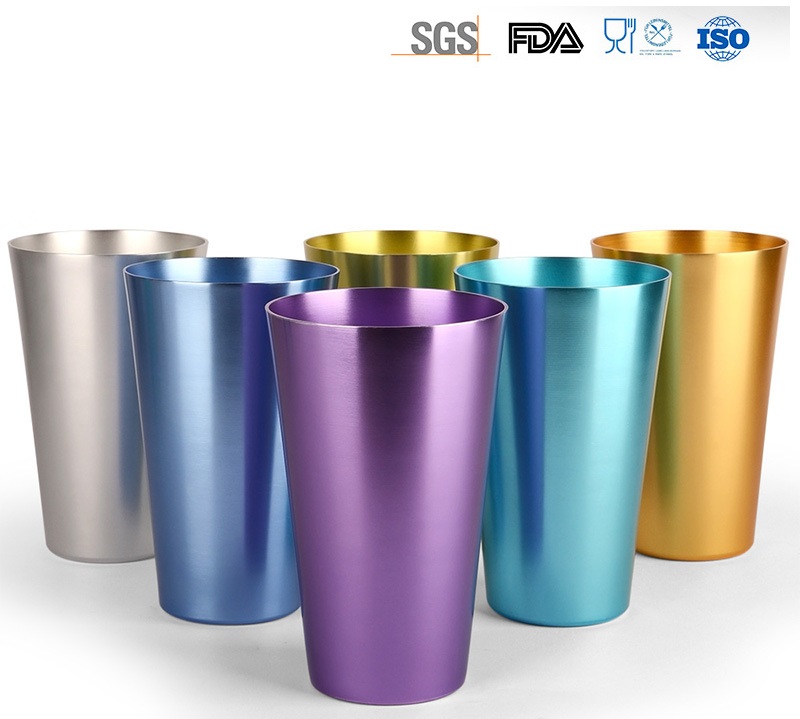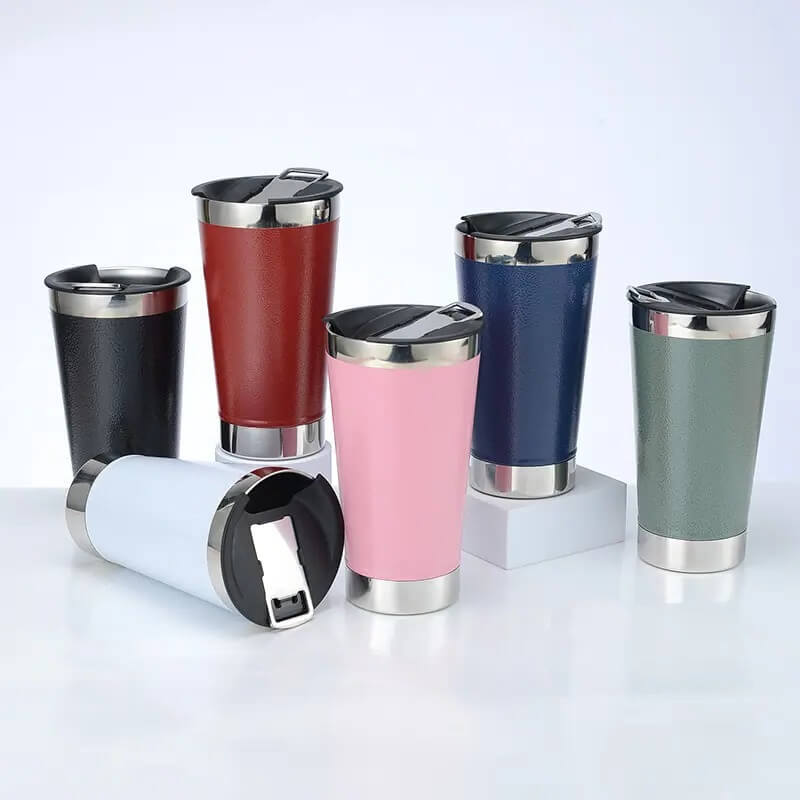While choosing cups for your business or personal use, you might have come across two options: Metal Cups and Plastic Cups.
Both of them are widely used, but choosing one of them becomes a bit difficult, especially if you are unfamiliar with their pros, cons, features, and other intricate details.
In this article, we will explain the types of metal cups and plastic cups and the materials used to make them. We will also compare both to make your selection easier.
What Are Metal Cups Made Of?
Metal cups are made of food-grade metals, such as stainless steel cups, aluminum cups and aluminum tumblers.
These metals are melted and even mixed with some other metals to offer excellent durability. The melted metal is poured into molds of the desired shape to turn it into metal cups. Some metal cups are made by extrusion, deep draw, or snipping.
Some metal cups, such as aluminum cups and copper cups, are also coated with a thin layer of some other material that does not react with acidic drinks.
Finally, the cups are polished to give them a finished look that is clean, even, and shiny.

Types of Metal Cups
You can find three types of metal cups in the market:
- Stainless steel cups
- Aluminum cups
- Copper cups
Stainless steel and aluminum cups are the most commonly used and preferred. However, copper cups are rarely used.
Stainless Steel Cups
Stainless steel cups are the first choice of people. These are safe for drinking, durable, and corrosion-resistant.
They are made up of food-grade stainless steel, which is an alloy made up of iron, chromium, and nickel. Due to the presence of chromium, the alloy does not react with oxygen and other chemicals. It becomes corrosion and rust-resistant. And nickel improves its corrosion resistance, durability, formability, and luster.
The most common type of stainless steel used for metal cups is 304 or 18/8. It contains 18% chromium and 8% nickel.
Stainless steel cups offer incredible durability, lifespan, and hygiene. They are easy to clean and sanitize. They retain temperature for a long time, which is excellent for hot and cold drinks.
Most importantly, they do not react with any drink, even if it is acidic or carbonated. And they are reusable and recyclable.
The features and properties of stainless steel cups are commendable, but they are a bit expensive compared to aluminum cups and plastic cups.
Aluminum Cups
The second choice for metal cup users is aluminum cups. These are made from pure aluminum material, which means there is no mixing of other metals.
It also offers some excellent properties, such as durability, formability, lightweight, and temperature control.
Aluminum is lighter than stainless steel and is more affordable. It is also reusable and recyclable. However, it can’t bear impacts like stainless steel.
The issue with aluminum cups is that they may retain the odor and taste of the drink. Secondly, they can react with acidic drinks, which is why lining or coating an inert material is necessary.
Copper Cups
Copper cups are also used for drinking. They are durable and appealing. However, pure copper can react with liquids, so it is necessary to line or coat copper cups with tin or any other suitable material to prevent the reaction.

Metal cups vs. plastic cups
In contrast, plastic cups are lightweight and convenient, often used for single-use purposes such as parties, events, and quick beverage consumption. While plastic cups are affordable and easily disposable, they contribute to environmental pollution and pose risks to human health due to the potential leaching of harmful chemicals. Additionally, the lifespan of plastic cups is significantly shorter compared to metal cups, resulting in a higher environmental impact due to increased waste generation.
When considering the environmental impact, metal cups, especially those made of aluminum or stainless steel, emerge as the more sustainable choice. These cups are reusable, reducing the need for single-use plastic cups and minimizing waste. Furthermore, the recyclability of metal cups supports the circular economy, contributing to resource conservation and environmental protection. In contrast, the disposal of plastic cups adds to the global plastic pollution crisis, negatively impacting ecosystems and marine life.
From a health perspective, metal cups offer an advantage over plastic cups. Aluminum and stainless steel are inert materials, meaning they do not react with the substances they come into contact with, ensuring that the taste and quality of beverages remain unaltered. In contrast, plastic cups have been associated with the leaching of harmful chemicals, such as BPA and phthalates, into beverages, posing potential health risks, especially when used for hot liquids.
In terms of practicality, metal cups, particularly stainless steel cups, offer insulation properties, keeping beverages hot or cold for extended periods. This makes them suitable for various beverage types, including coffee, tea, and cold drinks, providing an enhanced drinking experience. Plastic cups, being non-insulating, do not offer the same level of temperature retention, limiting their versatility in maintaining optimal beverage temperatures.
Conclusion:
In conclusion, the choice between metal cups and plastic cups ultimately depends on the intended use, environmental considerations, and health priorities. For long-term durability, sustainability, and health safety, metal cups, especially those made of aluminum or stainless steel, emerge as the superior choice. Conversely, plastic cups, while convenient and affordable, pose environmental and health risks, making them a less favorable option in the context of sustainable living and responsible consumption.

